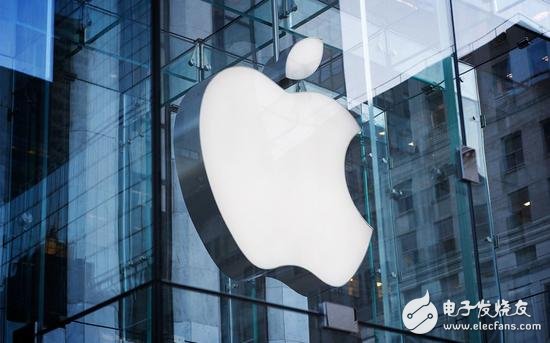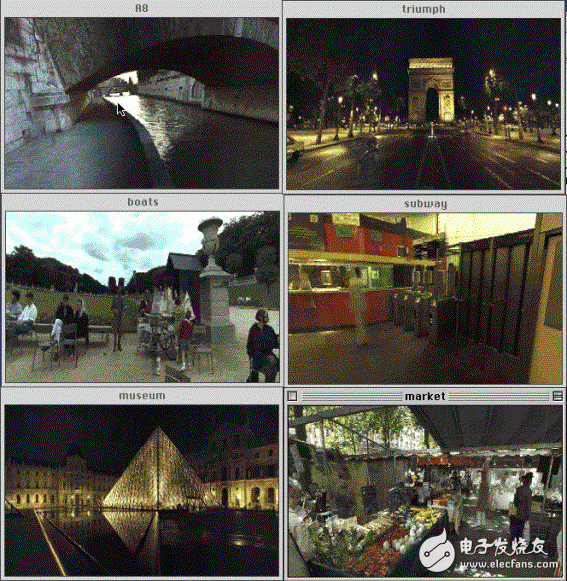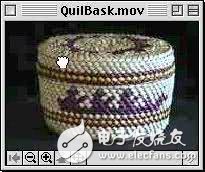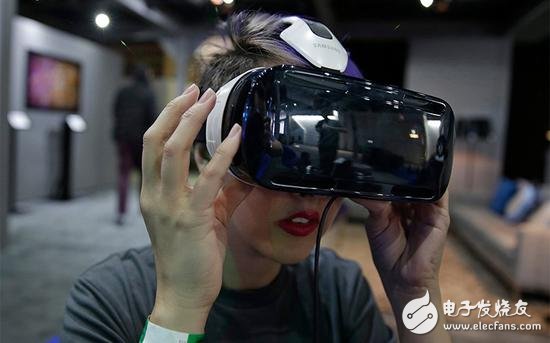Do you think Google and Oculus are the leaders in the virtual reality industry? You are wrong, Apple had VR products available in 1995, which is earlier than anyone else. This product, which was originally left behind by Jobs, is now the most sought after baby.
Apple called the VR project QuickTIme Virtual Reality, referred to as QuickTIme VR.
This may be the strangest episode in the history of Apple's development.
The QuickTIme VR project started when Jobs switched to NeXT, and if it keeps growing, it could have been ahead of the technology industry for decades.
But after Jobs returned, QuickTIme VR was not taken seriously, and the final project ended in 1997. Apple retained the panoramic video technology in QuickTime VR to support iPods and other new products, and it was not until 2006 that it was discontinued.
QuickTime VR is first put into use

The advent of QuickTime VR is also a coincidence. In 1991, Apple's Human Interface Lab researchers wanted to understand cutting-edge technologies and systems, and began experimenting with 3D images. QuickTime VR was presented as an early research project at that time.
The first time that QuickTime VR gained public attention was in 1994, when NBC used this technology to take a panoramic view of the apartment in Simpson's wife-killing case.

(Panorama of QuickTime VR)
David Bohrman, producer of the NBC News feature, wants to make the Simpson case broadcast better. He said: "I know that the discovery process of corpses and bloodstains will be noticed once it is broadcast. Coincidentally, I heard that Apple's QuickTime VR is about to be released. So there is this cooperation."
NBC took the 26 different scenes of the Simpsons and stitched them into 360° panoramas with QuickTime VR. At the time of the broadcast, NBC's reporter Jack Ford spoke about the news while moving the image to show the exact geolocation of the case.
"The effect of this approach is really amazing," David Bowman said.
Until 1995, QuickTime VR was officially released to the public as a standalone product.
The technology is limited by the fact that QuickTime VR offers more like panoramic images or Google Street View.
QuickTime VR has not received much attention in Apple's later product development, and has gradually faded out of sight.
QuickTime VR is ahead of the invention at the time
The introduction of QuickTime VR on its old website is this:
QuickTime Virtual Reality (QTVR) is an image-based VR whose immersive experience will be accepted by more people in the future. There are three forms of QTVR: panoramic images, still images, and scene experiences.
The panoramic image of QuickTime VR is created by taking multiple consecutive, partially overlapping images and then stitching the images together to become a panoramic photo. After the photo is created, use QuickTime VR to convert, you can use the mouse to move the image, control zooming in and out, this image can provide more real experience. Although it is a panoramic image, due to technical limitations, the maximum viewing angle is 100°.

The still-life image is a multi-angle shot of an object, and the stitching is combined. The viewer can move the mouse to observe every detail of the item in all directions.

In the early 1990s, the development of digital cameras was not perfect, and there was no 360° camera similar to Google Jump. When shooting, you will take a bunch of photos with a static camera and stitch them into a QuickTime panorama.
After the photo is taken, the processing is also very troublesome, because you need to consume a lot of computer performance to complete the stitching work - and this kind of thing, now we can do it with a mobile phone.
Dan O'Sullivan, an early engineer at QuickTime VR and a professor at New York University, said: "The work of stitching all the images is quite large. Apple even bought a Cray supercomputer to do a lot of image processing."
John Sculley, the former CEO of Apple, expressed his feelings about Apple's QuickTime VR:
When QuickTime VR came out, it actually stitched together a lot of still photos to form a panoramic image, not a video. But in those days, even a still panoramic image was amazing.
QuickTime VR is not perfect
It seems that Apple has done a lot in early VR. But what has to be said is that this product is flawed.
why?
360° video is not a VR, just a panoramic image, and Apple's early VR products, the most lacking is the immersion that VR emphasizes.
QuickTime VR is at best a leader in panoramic images. But at the time, dragging the mouse can travel around the virtual world, and QuickTime VR is like a magician who takes you into another time and space.
"There was no head-mounted VR at the time, no interaction, and calling QuickTime VR a VR was controversial and somewhat arrogant," said Dan O'Sullivan, an early engineer at QuickTime VR.

(unilateral shooting of a scene, there is no interaction)
In a way, since the 1990s, the panoramic image hasn't changed much since QuickTime VR – it's just that today's panoramic photography is a breeze.
Dan O'Sullivan said:
QuickTime VR is not enough to implement some of the features that VR should have. I think there are two kinds of VR, one is to shoot 360° panoramic video, and the other VR is more interactive.
To date, when it comes to data and technology, most people think of companies like Google and Facebook, but when it comes to user experience, Apple is the world leader. The surprises that QuickTime and QuickTime VR brought to people at the time were the best.
Hurry to chase other homes, Apple how to layout VR today

Although Apple had VR products available in the late 1990s, it was ignored when Jobs returned to Apple and his development was suspended. But it must be admitted that Apple has already explored VR when the public has not yet understood the concept of virtual reality.
Earlier reports that Apple has begun to catch up with the pace of VR development.

In May 2015, Apple acquired the startup Metaio, which focuses on augmented reality and computer vision technology.
At the end of November 2015, Apple acquired FaceShift. FaceShift researched facial motion capture technology to capture the details of the user's face and completely copy it to the game characters.
At the end of January 2016, Apple acquired FlyBy Media. Relevant media also reported that Flyby Media will join Apple's “secret research department†and develop prototypes of VR/AR devices within a few months.
As early as 3 years ago, Apple acquired PrimeSense, which manufactures camera and video sensor hardware, which is a category of computing vision.
Earlier, Apple also recruited Doug Bowman, an expert in the field, who previously served as chief designer in the Google Virtual Reality division.
Earlier this year, Ai Faner reported that a device called View-Master VR began to be sold on Apple's website.
But with these alone, I can't fully understand how Apple wants to take a slice of the hot industry of VR.
Gene Munster, an analyst at Piper Jaffray, an investment analysis firm, said that 2021-2025 was a critical period for Apple to introduce VR products. But he believes that Apple will not promote VR products. Apple VR, like the Apple Watch, will be used as an aid to mainstream products.
When Tim Cook, Apple's current CEO, was on the show 60 Minutes, host Charlie Rose concluded:
Apple should be one of the most valuable and mysterious companies in the world. It is difficult for you to find the answer in this story today. The answer will only appear when they want to be public.
Ip67 Outdoor Power,Power Supply 24V 250W,Led Power Supply 24V 250W,Waterproof Led Power
Jiangmen Hua Chuang Electronic Co.,Ltd , https://www.jmhcpower.com